|
|
Studio UG Benefits A list of the key features and benefits of Studio UG |
Studio UG: Key Features and Benefits
Studio UG provides tools for underground planners that are unavailable in other software packages.
Designed by mine planners for mine planners, it offers unique benefits:

|
Accessible, Simple, Usable. Most UG planning software packages require extensive customization for each situation or application. This can be daunting and commonly this challenge is only resolved with lengthy and costly up-front configuration, implementation and training projects. Studio UG has been designed to break this mould and remove the training burden by providing a standard system with intuitive and understandable controls, thoughtfully designed for underground mine planning requirements
|
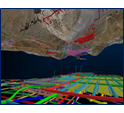
|
Big Data? A matter of perspective… Studio UG’s 3D engine can easily handle large data sets. As a 64-bit application, you can manipulate your 3D data view without having to worry about the typical screen ‘judder’ and unbearable lag associated with other products. |
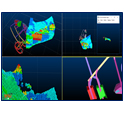
|
Unlimited Multiple Views Not only does Studio UG provide a robust and powerful 3D engine, it also allows you to view your data using multiple windows, all connected to the same underlying data source. Split your windows vertically and/or horizontally or spawn floating, interactive 3D viewports. You can even split the external views, which can be clipped independently and positioned outside of the application frame. Perfect for multiple monitors!
|

|
3D Models – Not Just Slices! Datamine understands that to truly understand how to design your developments, you must work in relation to your estimated resources. If you can’t ‘see’ your planning model in full 3D space, you run the risk of uninformed or risky decisions. Studio UG incorporates the planning model into all aspects of its workflow, allowing it to be rendered with a huge range of visual formatting options, including 3D blocks. A full and interactive 3D block representation is the only way to do proper design and consider all the information relevant to the process.
|

|
Design to Plan – a Reliable and Integral Database A key principle that underpins Studio UG is the database that holds project data, from the original design strings to the schedule-in-use. Studio UG maintains original design files securely within its project so you can review source data at any time, reinforcing your governance and reducing the unnecessary rework associated with orphaned design data. |
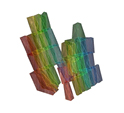
|
Stope Optimization Studio UG includes the latest available version of Datamine’s Mineable Shape Optimizer (MSO). Studio UG presents MSO in an intuitive interface to guide you through the process without the need for extensive training. You can also setup sensitivity runs automatically – there’s no need to create each one manually. |
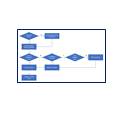
|
Connected Sequencing There’s little point in completing a logic sequence and then exporting to your scheduler to see the impact of rates and times on the schedule. With some software, this inevitable two-step process is time-consuming and costly. Studio UG smashes this challenge with a clever connection to the scheduling engine so rates are considered whilst you create the links. By the time you export to Datamine’s Enhanced Production Scheduler (EPS), the work is basically done, saving considerable time, effort and unnecessary rework.
|

|
Multiple Objects per Design Type Having only a single object or layer for each design type is okay for simple projects but becomes highly restrictive for more realistic scenarios. Merging design files in advance to process activities for scheduling is a costly workaround and reduces the granularity of your project. With Studio UG, you aren’t restricted to a single design object for each type – use whatever you need! This multi-object approach lets you complete your design in manageable chunks by a team of engineers, all linking through to data preparation seamlessly.
|
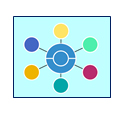
|
One-stop Change Processing Studio UG challenges the concept of having to process each design type using a separate interface. In Studio UG, it’s all done in one place, creating all activities and solids for you automatically. …and it’s processing of changes, not a rerun of all processing. This significantly reduces the time take to process alterations and makes it possible to test out different configurations and witness the impact on the schedule in a practical timeframe. Processing feedback is clear and interactive; review and refine your configuration quickly and easily, then just re-process the changes in a single click!
|

|
Animations in Seconds! Studio UG animations are generated automatically, using the current time scale set in EPS. So much simpler than competitor systems that require a manually defined animation legend! |

|
If One Model Isn’t Enough – Use More! Studio UG will not restrict you to a single-model project. There is no need to combine your models or work out how to join models with different rotations in advance. In Studio UG, you can add multiple block models to your project; if your design spans multiple models you can have multiple files and run interrogations on different mine areas by applying a filter in the interrogation settings. This is much more convenient and allows you to have smaller individual block models loaded. When running evaluations it is also faster as the models are smaller when loading to memory for that process.
|
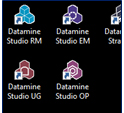
|
Project Portability Studio UG projects are recognized by other Studio applications, including Studio RM, EM and OP. This provides useful opportunities for inter-departmental collaboration and ensures that your valuable corporate data is protected by a single collaborative framework of products. It also minimizes the impact of potentially risky data type conversions throughout the life cycle of your data. |
|
|
Related Topics |
|
|
Welcome to Studio UGStudio UG vs. Studio 5D Planner |
Copyright © Datamine Corporate Limited
JMN 20045_00_EN


